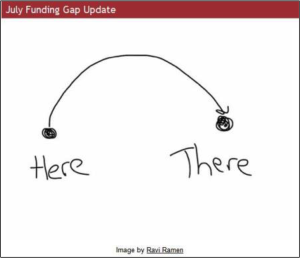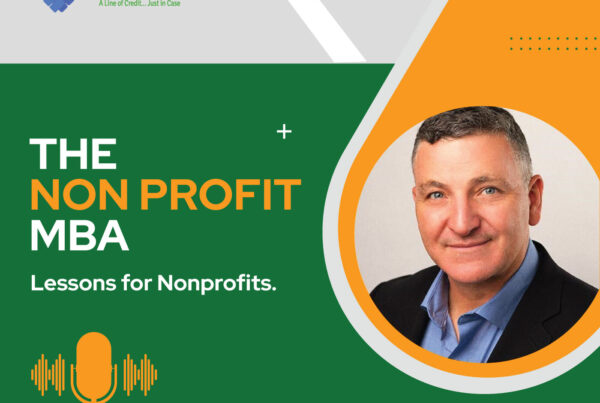Stop and think for just a quick second and type your answer into the comments box below.
Do you know EXACTLY how much money you must raise from individual donors to have a successful fundraising year?
If $500,000 is your goal for the year, as of this week you should have nearly $87,000 raised. . . in the door. . . gifts received.
If $1 million is your goal for the year, as of this week you will want to have around $173,000.

Image courtesy of Upstream Arts
And if $100,000 is your goal for the year, you want to have $17,400 raised as of today.
So, who have you told about those numbers? Anyone? Telling the truth to your board, donors and other supporters is what it takes to raise all you need – with ease. Yes. Ease.
I talk a lot about communication and sharing your money story.
I know it’s easier to breeze past talking about exactly what you must raise this year. You don’t want to feel “asky” right?
My recommendation is to KNOW and share your “funding gap.” It’s a term I use to describe the difference between where you are today and where you must be to do all your important work.
Christina asked this question after learning about the funding gap terminology: What if you are extremely under-budget and over your fundraising goals? What if there is not a funding gap?
Because this is a question I get asked often I thought I’d share the answer I sent to her.
Christina, Your question is a good one and what I say to that is:
Are all of your staff paid at the level they deserve to be?
Does your organization offer excellent medical insurance and a 403B retirement plan for employees?
Is all your equipment and space state of the art? Are all of your programs fully funded with no waiting lists? Are your programs and fundraising department fully staffed?
If you answer YES to these questions than you likely don’t need more fundraising dollars.
If you answer NO to any of these questions, you have a funding gap for the vision of where your organization must be to serve your community.
Your funding gap is not a budget number. It’s your money story.
It’s the gap between what it takes to truly do your work at a quality level and what you raise from the community each year.
Telling the truth about your money story allows a donor or potential donor to know exactly what they can do to take action. It allows them to know what they can do to fulfill their own aspirations for their community.
While they may not ask, your supporters really DO want to know exactly what they can do to help. They want to know exactly how much it takes to deliver your amazing programs and how much you need today. Not just in November or December during the final fundraising push at the end of the year. Now. Today.
My challenge to you is to speak the truth and then go raise all you need this year.







I agree. But this is tough for nonprofits. Very tough. I wrote a post on the subject and hope you don’t mind me posting a link to it below. In this post I describe the vicious cycle that nonprofits face mostly because donors want them to keep their fundraising and administrative costs low. It’s a real challenge to navigate this.
http://imarketsmart.com/how-to-break-the-most-vicious-cycle-that-hamstrings-your-organizations-growth/
Greg,
It IS a huge challenge in the social sector. I”m committed to be a part of the change by training staff and board to share clear, bold, communication that transparently shares the money conversation. Would love to have a conversation or do a joint post about how to support NPOs in doing this and educating their supporters. Thanks for posting!
Lori, I met you at the AFP of Western New York Philanthropy Symposium. Thanks for a wonderful day of inspiring information!
Our organization is very large but has only made a system wide commitment to philanthropy since about 2012. We still don’t really have the attention of our top leaders, or their understanding of the very real funding / vision gaps that philanthropy can make an impact with. We are used to raising funding for capital needs and the programs of a few visionary leaders within the organization. How would you suggest we move the conversation/vision forward?
Terry,
Excellent question! And likely a longer answer needed than I can provide here, but I’ll give you a few thoughts and recommend you sign up for a strategy session so we can talk through some additional recommendations. https://go.oncehub.com/IgnitedFundraising
First – make certain you are regularly talking about “what it takes” to deliver your important programs. Do this at staff, board, and ANY opportunity you have to connect with your community.
Second – Regularly share stories of one person who has a different life because they received medical care at your Catholic healthcare facility.
Third – Make certain there is ALWAYS a sense of urgency to your monthly, quarterly, and annual fundraising goals – that feel as important as a capital campaign timeline.
I hope this helps, Terry!
Thanks for reading AND for the important work you do.
~Lori